
From Name planted trees for you, Recipient Name.
See your Tree Certificate attached, and click here
to learn about One Tree Planted's work.
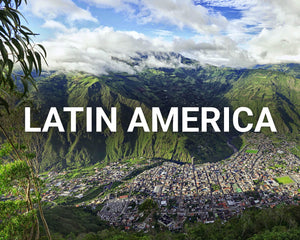
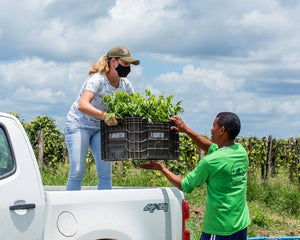
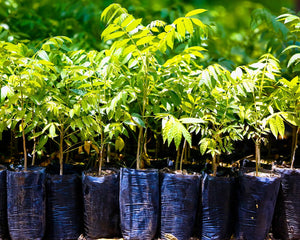
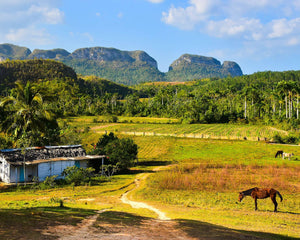
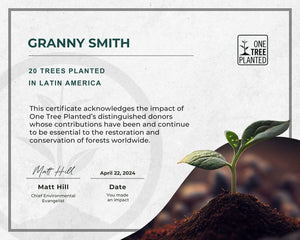
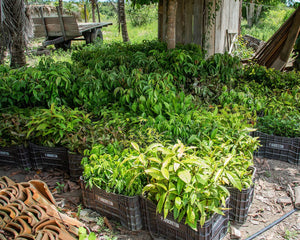
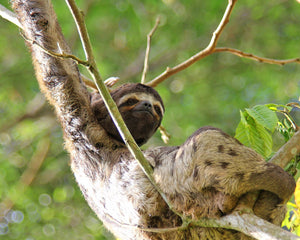
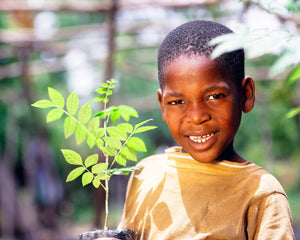
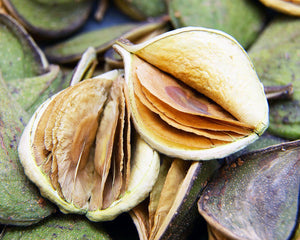
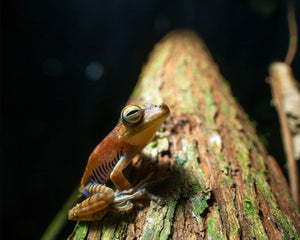
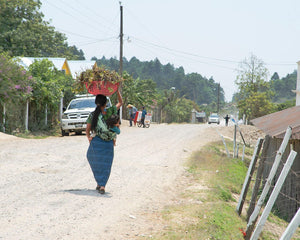
From the lush rainforests of the Amazon basin to the Andean Cloud Forests, Latin America’s forests are home to some of nature’s most incredible flora and fauna. Reforestation in Latin America helps to protect these vital ecosystems. Learn more
With your help, we will:
Looking to plant trees every month? Join The Grove.
Latin America's diverse forest landscapes are of global significance, housing ecosystems and species that are found nowhere else on Earth. However, these landscapes face escalating threats, including deforestation, habitat loss, and climate change impacts. Collaborative conservation, sustainable development, and community involvement are vital to safeguarding these forests, ensuring that their benefits for biodiversity, climate, and communities endure for future generations. Learn more about the unique impact of planting trees in Latin America!
Some of Earth’s most important tropical forests can be found in Latin America. Despite this, the Amazon, Andes, and Atlantic forests face significant deforestation as massive tracts are cleared for agriculture, livestock grazing, and timber.
One Tree Planted's projects in Latin America are rebuilding forests and restoring land so the benefits of healthy tropical forests can be felt around the world. Our partners work with communities that are directly impacted by deforestation so they can benefit from improved forest management practices and agricultural techniques such as sustainable agroforestry. This also helps to ensure that the trees and land will be taken care of for generations to come.
A personalized tree certificate (see gallery) to say thanks for your donation. We’ll also send you a report on the Latin America project that your donation was allocated to, so you can better understand your trees' impact on the environment and communities.
Every tree we plant will impact the surrounding ecosystem, and must be selected with great care. We work with our planting partners to ensure each species we plant will only provide benefits to the surrounding ecosystem.
In Latin America, we plant a range of tree species based on the intended impact of the project. In the High Andes, we plant polylepis trees, protecting water for millions of people. The trees and roots absorb glacial meltwater, slowing the water’s release into watersheds downstream.
Some of our Latin America projects, such as in Honduras, utilize hardwood tree species. Hardwood trees are carbon storage powerhouses. While hardwood trees tend to take longer to grow, their environmental impact is worth the wait.
In other projects, such as in Mexico, tree species are planted specifically to restore critical habitat for biodiversity. The oyamel pine is an important example, as it is planted to restore nesting grounds for the eastern migratory monarch butterfly. This tree provides these beautiful pollinators with protection and warmth during the winter months.





We believe in complete transparency regarding how your donation dollars are utilized. As every tree planting project is unique, the cost to plant a tree is different for every single project. We work together with our partners to determine how we can best support them within our reforestation model. Each project has a budget that covers specific primary costs. To learn more about how our funding works, visit the Our Model page.

We work with local planting partners in more than seventy countries, across diverse ecosystems, to fund large-scale, high-impact projects.

One Tree Planted is a 501(c)(3) non-profit environmental charity that makes it easy for individuals, businesses, and foundations to get involved and make an impact around the world.

Every tree planted with One Tree Planted makes a positive impact. Together, we can restore forests, create habitat for biodiversity, and make a positive social impact.
Every One Tree Planted project begins with a detailed proposal from a local planting partner, which details where, why, and how the trees will be planted. After planting wraps up, our Monitoring, Reporting and Verification Team works closely with our reforestation partners to map and monitor their growing trees. This allows us to analyze the impact the trees will have on overall forest health, biodiversity, and surrounding communities.
We take donor impact reporting seriously, and require our reforestation partners to track and report specific metrics for every project that is completed. Click on the button below to view a planting report from a recent reforestation project.

Planting trees in Latin America will help to restore vital forest cover in a region that is of global significance for biodiversity and climate change. Click on the reforestation map to discover a selection of our Latin America projects, and the impact they will have for generations to come!

Forests provide jobs to over 1.6 billion people, absorb harmful carbon from the atmosphere, and provide key ingredients for 25% of all medicines. Have you ever taken an Aspirin? It comes from the bark of a tree! At One Tree Planted, we focus on the 6 Pillars of Reforestation. These pillars are the foundation of why planting trees is such a significant action to take.
Trees help to clean the air we breathe. Through their leaves and bark, they absorb harmful pollutants and release clean oxygen for us to breathe. In urban environments and other ecosystems, trees absorb pollutant gases such as nitrogen oxide, ozone, and carbon monoxide, and sweep up particles such as dust and smoke. Increasing levels of carbon dioxide caused by deforestation and fossil fuel combustion trap heat in the atmosphere.
Trees play a key role in capturing rainwater and reducing the risk of natural disasters such as floods and landslides. Their intricate root systems act as natural filters, removing pollutants and slowing down the water’s absorption into the soil. This process prevents harmful waterslide erosion and reduces the risk of over-saturation and flooding. According to the UN Food and Agriculture Association, a mature evergreen tree can intercept more than 15,000 litres of water every year.
A single tree can be home to hundreds of species of insects, fungi, mosses, mammals, and plants. Depending on the type of food and shelter they need, different forest animals require different types of habitat. Without trees, forest creatures would have nowhere to call home.
From arborists to loggers and researchers, the job opportunities provided by the forestry industry are endless. We don’t just rely on trees for work, though. Sustainable tree farming provides timber to build homes and shelters, and wood to burn for cooking and heating. Food-producing trees provide fruit, nuts, berries, and leaves for consumption by both humans and animals, and pack a powerful nutritional punch.
Did you know that hospital patients with rooms overlooking trees recover faster than those without the same view? It’s impossible to ignore that feeling of elation you get while walking through a calm, quiet forest. Trees help reduce stress and anxiety, and allow us to reconnect with nature. In addition, shade provided by canopy cover helps to protect our skin from the ever-increasing harshness of the sun.
Trees help cool the planet by absorbing and storing harmful greenhouse gases such as carbon dioxide into their trunks, branches, and leaves — and releasing oxygen back into the atmosphere. In cities, trees can reduce ambient temperatures by up to 8° Celsius. With more than 50% of the world’s population living in cities — a number expected to increase to 66% by the year 2050 — urban trees are more important than ever.
One Tree Planted has planted trees in six global regions: North America, Latin America, Africa, Asia, Europe, and The Pacific. Every reforestation project has a unique impact on forests, communities, biodiversity, and the environment. Check out the incredible impact some of our past projects have made!
Read more
This project is part of a multi-year, multi-partner initiative to restore 1 million hectares of Polylepis ecosystems throughout the high Andes. Polylepis forests are an extremely important source of South America’s water system, including the Amazon basin. The goal of this project is to secure places to reforest, collect seed from local native forests, repair or build simple, on-site plant nurseries managed by local communities, and acquire the materials needed to grow the seedlings.
Polylepis forests provide critical ecological benefits. Found at treeline altitudes in the Andes, these forests help create and feed major sources of water for everything downstream, including the Amazon rainforest and wetlands. These forests prevent severe erosion from melting glaciers above them while also contributing to climate resiliency and mitigation.
Read more
The goal of this project is to promote the recovery of soil cover through the implementation of sustainable agroforestry systems, by planting species of economic and ecological interest. This project includes the restoration of deforested areas, such as river banks, streams and springs. The intention is to link soil recovery with the generation of social and economic benefits for local communities that supply cooperatives, reducing pressure on forests and thus reducing deforestation and maintaining biodiversity.
Planting trees here will help to restore vegetation cover in areas with degraded soil and safeguard against future erosion. These trees will also reduce the pressure on existing forests reducing deforestation and safeguarding biodiversity habitat.
This project will have a powerful impact on surrounding communities by implementing sustainable agroforestry. Agroforestry will then promote a more diversified diet for low-income families, promoting food security for generations.
Read more
This project will plant rows of fruit trees along contours, with legume trees spaced in between the fruit trees. Soil conservation methods will also be implemented and include planting the legumes, laying logs on the contours, mulching the fruit trees, and not using chemicals. These methods are required to receive more fruit trees each season, improving the impact for generations.
By transitioning to biodiverse, organic agroforestry systems, this project will create a host of ecological benefits, including erosion control, improved biodiversity, carbon sequestration, and wildlife habitat conservation.
The trees planted in this project will increase food security for families, with diversified agroforestry systems providing far greater nutrition than the corn monocultures that were previously there. There is also an education element to this project, teaching respect for nature, discouraging chemical use, training and employing local technicians, and ultimately empowering the community to continue and expand this regenerative transition themselves.